Vegan Pasta Dough Recipe (Pasta di Semola)
All you need to make this vegan pasta dough recipe is semolina flour and water. This egg-free pasta dough is traditionally used for many hand-rolled pasta shapes from southern Italy. Semolina pasta has a nice texture and bite when cooked and is really easy to make. This dough can be used for a variety of pasta shapes like orecchiette, cavatelli, gnocchetti sardi and many more.
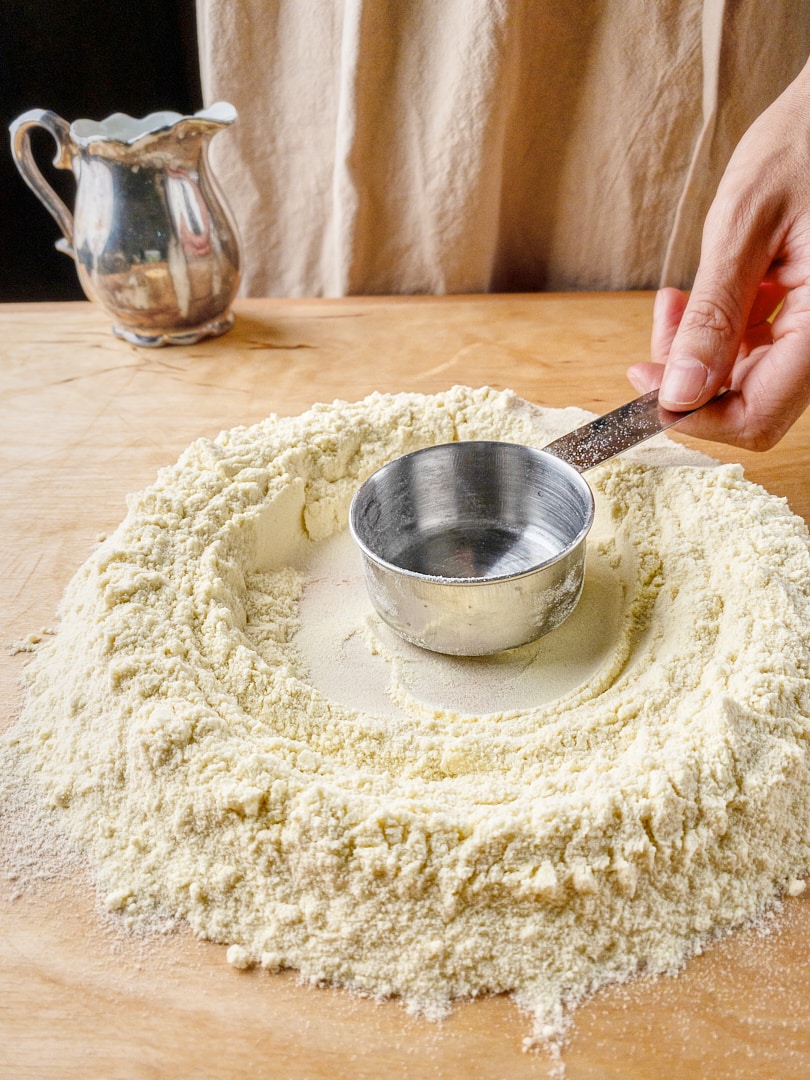
Ingredients and Tools You’ll Need
This recipe is based on a simple 2:1 ratio of semolina flour to water. Use about 100 g of flour per person and mix it with 50 g of warm water.
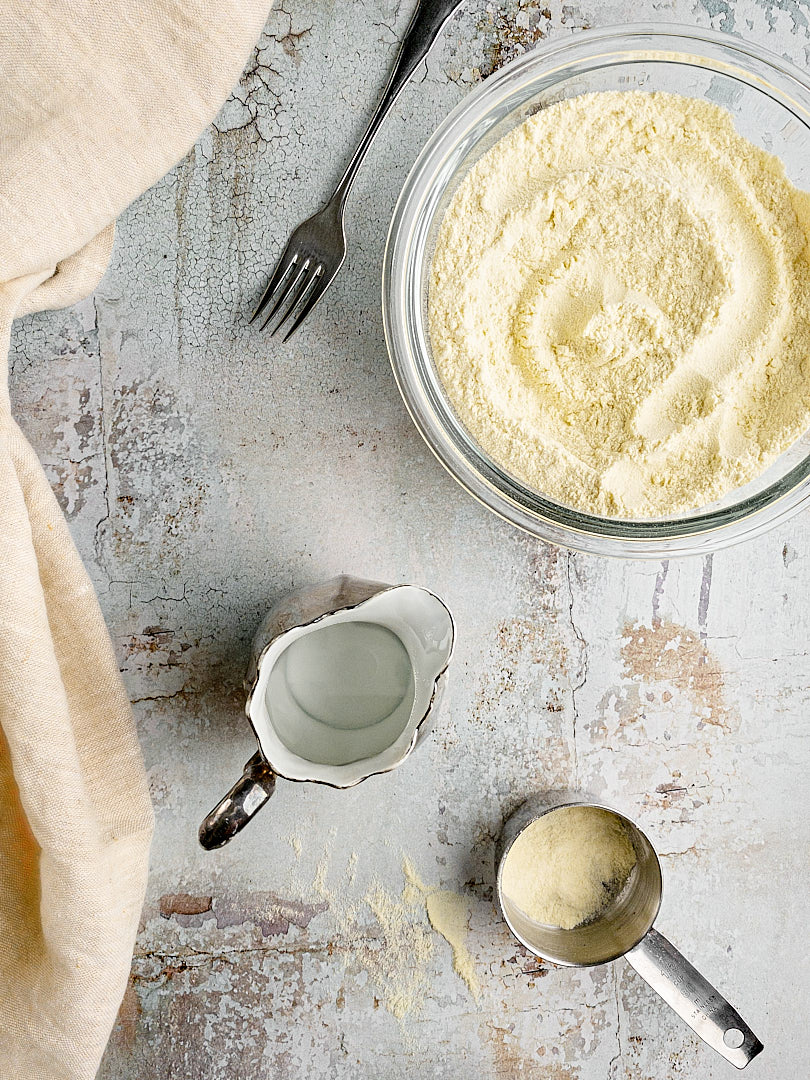
Step-by-Step Instructions
Step 1
Tip the semolina flour onto your work surface. Use the base of a little bowl or measuring cup to create a well in the center of the flour that can contain the water. Then, slowly pour the warm water into the well.
Step 2
Mix the flour and water with a fork. Work your way from the center outwards and incorporate more and more flour until the mixture in the center forms a thick paste. Fold in the remaining flour with a bench scraper. Incorporate it with a cutting motion to get evenly sized chunks of dough. Bring everything together with your hands and start kneading. If there is any flour left that doesn’t integrate easily, leave it out.
Step 3
To knead, fold one half of the dough over itself. Then use the heel of your hand to push it down and stretch it away from your body. Rotate the dough 90 degrees and repeat. The dough might feel a bit dry and crumbly at first, but will become smoother the longer you knead. Knead for at least 10 minutes until the dough feels smooth and elastic.
Step 4
Wrap the dough in cling film and let it rest for 30 minutes at room temperature. After resting, shape it into your favorite type of pasta! Cook the pasta in salted boiling water for 2-3 minutes and serve it with your favorite sauce.
Tips & Tricks
Common Questions About Semolina Pasta
More Pasta Recipes You May Like:
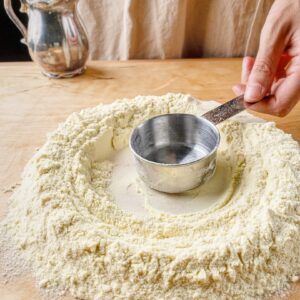
Vegan Pasta Dough Recipe (How To Make Semolina Pasta From Scratch)
Equipment
- Digital kitchen scale – for best results, always weigh your ingredients. It's more accurate than measuring by volume,
- Wooden pasta board – if you don't have a pasta board, you can mix and knead the dough directly on a clean work surface
- bench scraper – to facilitate bringing the dough together
- fork – to mix flour and water
Ingredients
- 400 g Semola rimacinata di grano duro – finely ground semolina flour
- 200 g Water – warm water makes the dough softer and facilitates kneading
Instructions
- Weigh the ingredients and tip the semolina flour onto your work surface.
- Use a small bowl or measuring cup to create a well in the center of the flour that can contain the water. Slowly pour the warm water into the well.
- Mix the water and flour in the center with a fork. Work your way from the center outwards and slowly incorporate more and more flour until the mixture in the middle forms a thick paste.
- Next, use a bench scraper and fold in the remaining flour. Incorporate it with a cutting motion to get evenly sized chunks of dough.
- Then bring everything together with your hands and start kneading. If there is any flour left that doesn’t integrate easily, leave it out. The dough might feel a bit dry and crumbly at first, but will come together into a smooth ball the longer you knead.
- To knead the dough, fold one half of the dough over itself and then use the heel of your hand to push it down and stretch it away from your body. Rotate the dough 180 degrees and repeat. Knead for at least 10 minutes until the dough is smooth and elastic. It should neither feel sticky nor crumbly.
- Cover the dough ball tightly in cling film and let it rest for at least 30 minutes at room temperature. After resting, shape your favorite homemade pasta.
- Cook the pasta in salted boiling water for 2-3 minutes. Pair it with your favorite sauce and enjoy!
Notes
- If you don’t have a pasta board you can mix the ingredients in a bowl until you have a shaggy dough. Then finish the kneading process on your work surface. This way is a little less messy than the method above and easier if you don’t have a lot of counter space.
- If the dough feels too tough, and you’re struggling with kneading, you can do a double rest: Bring the dough together and knead for 2-3 minutes. Wrap it in cling film and let it rest for 10 minutes. The dough should be a lot smoother and easier to knead after the first rest. Continue kneading for 5-7 minutes. Wrap it again and let it rest for another 30 minutes. Ready to shape!

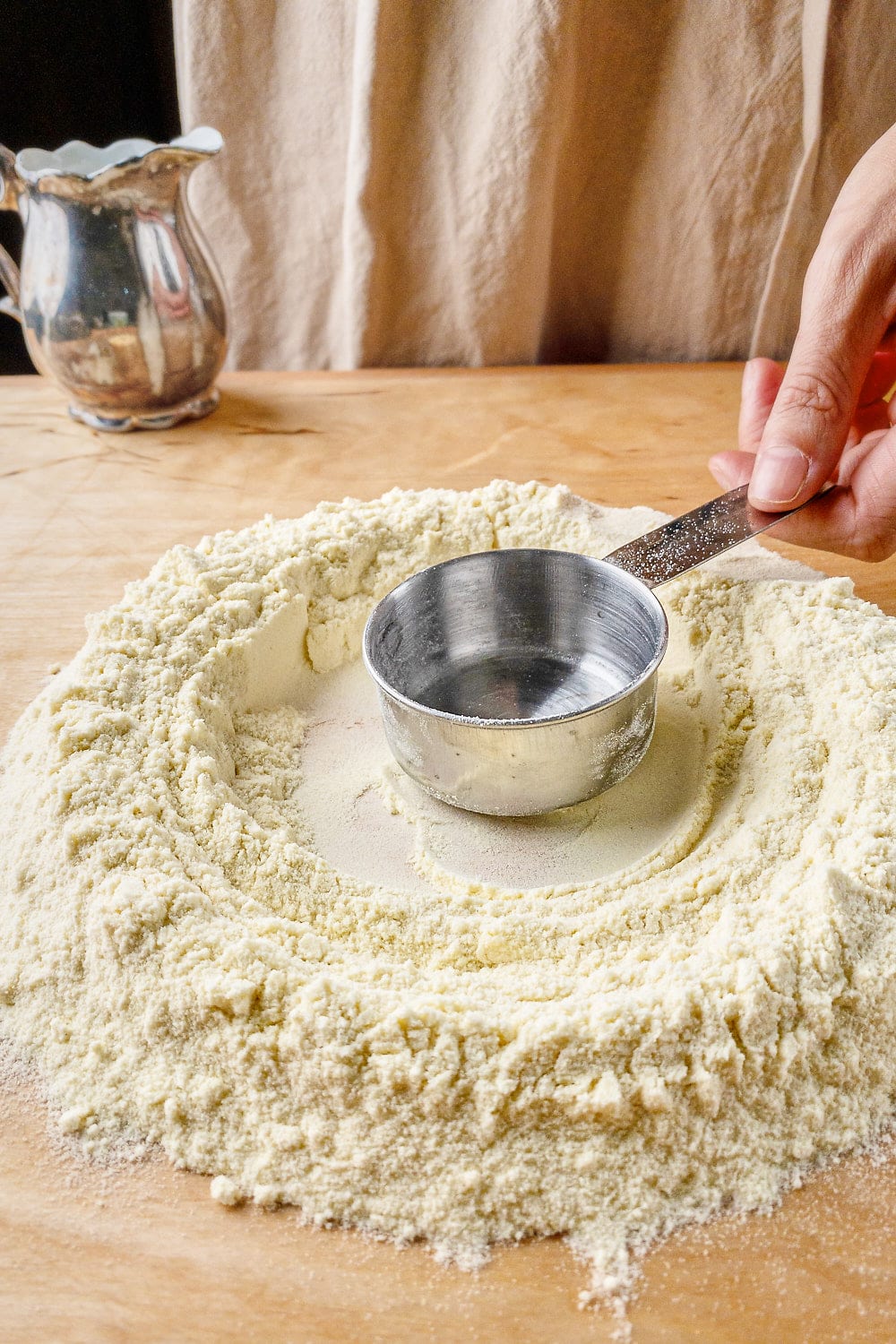
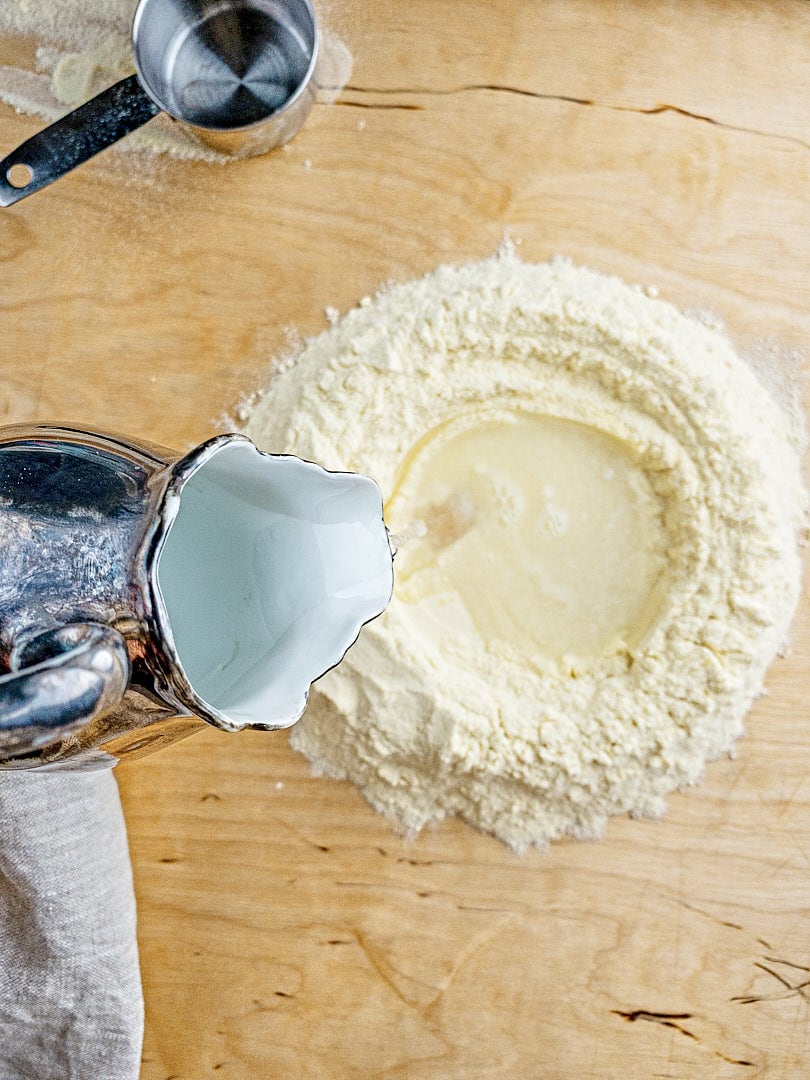
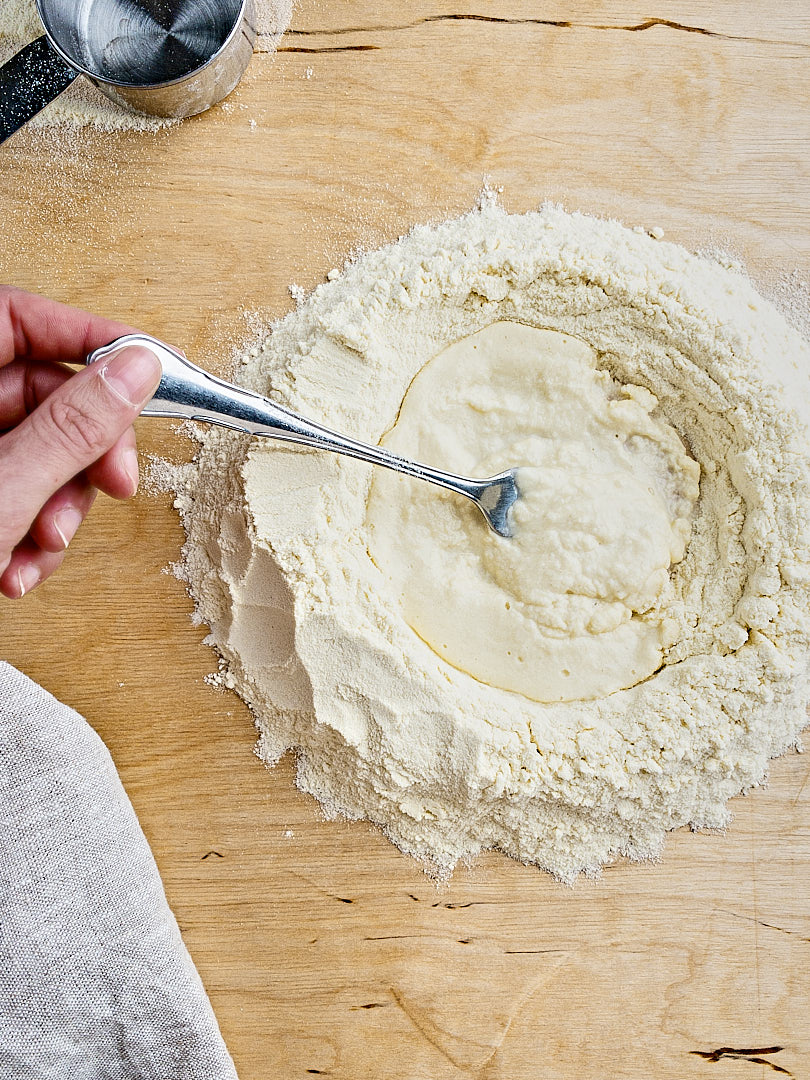
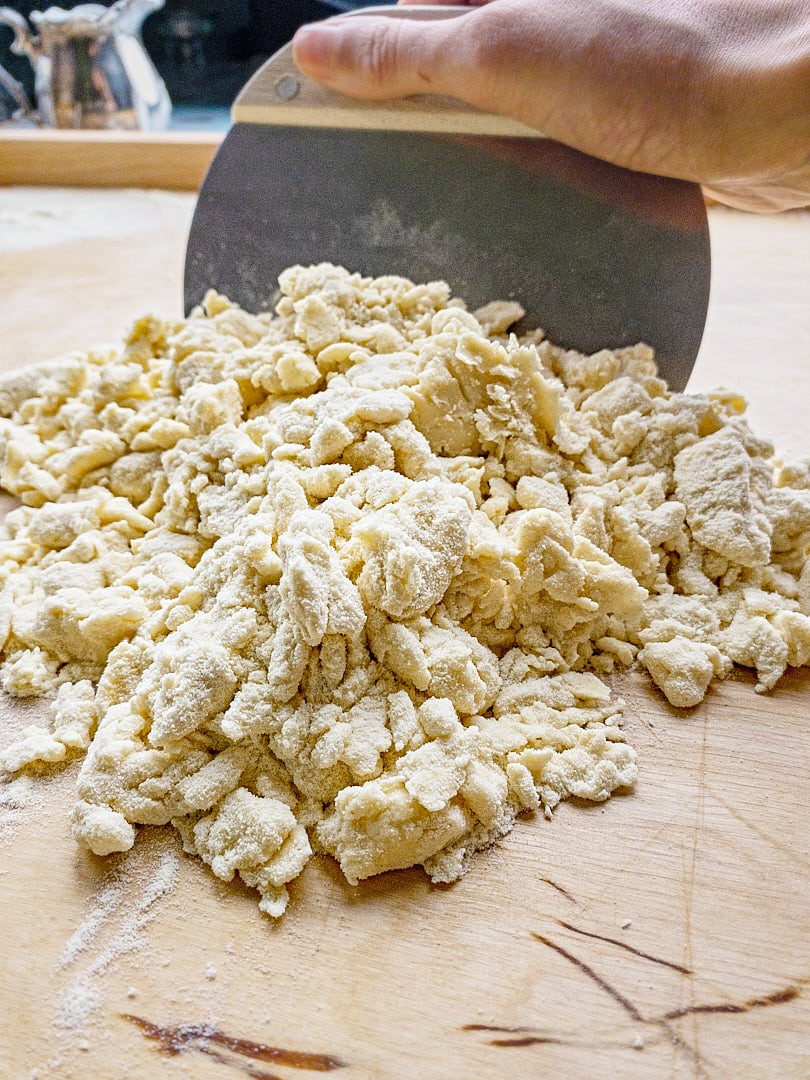
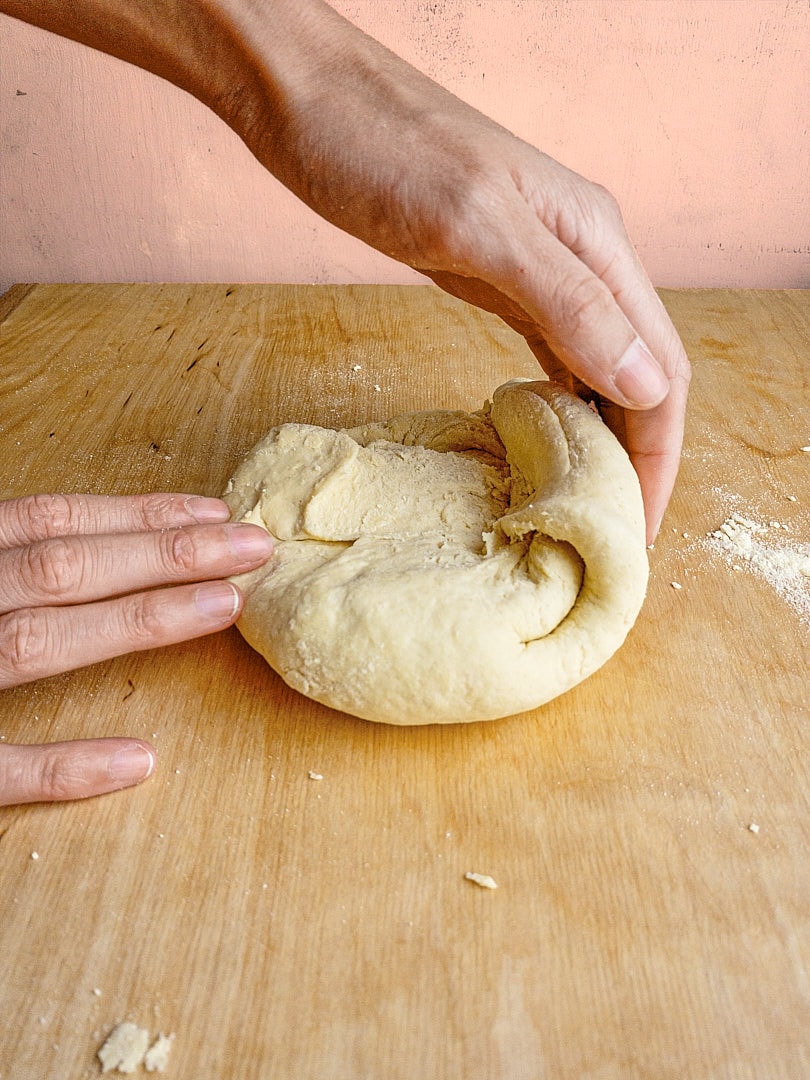

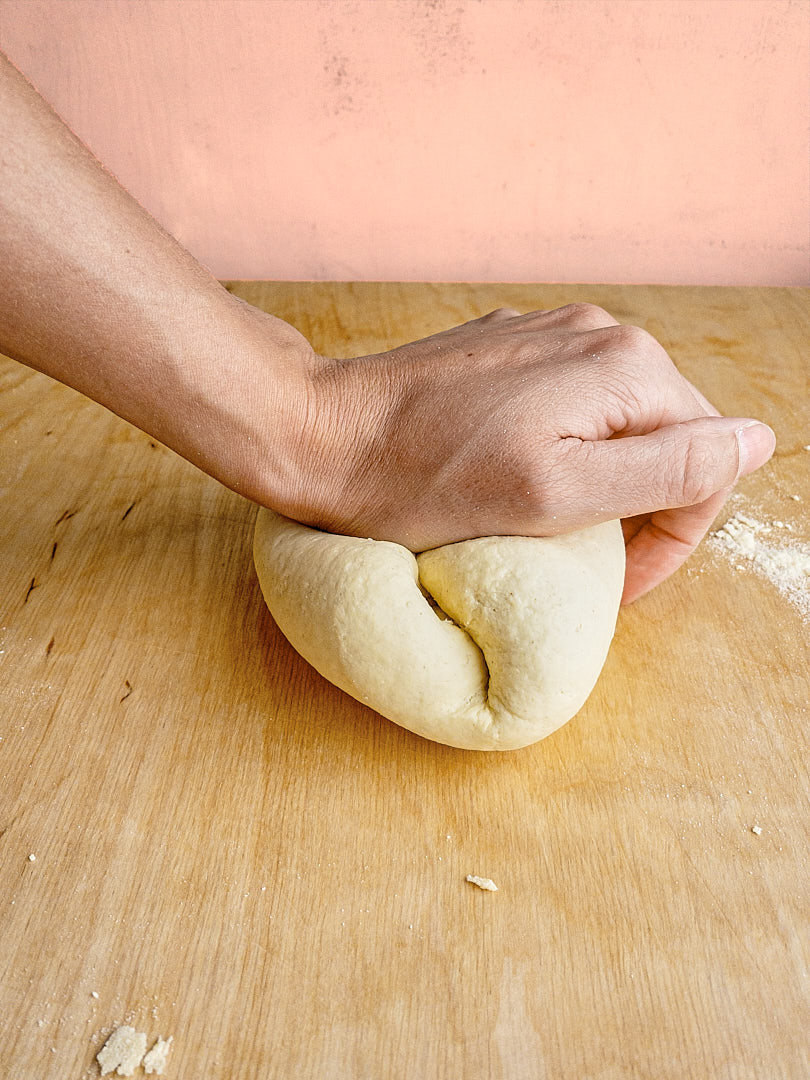
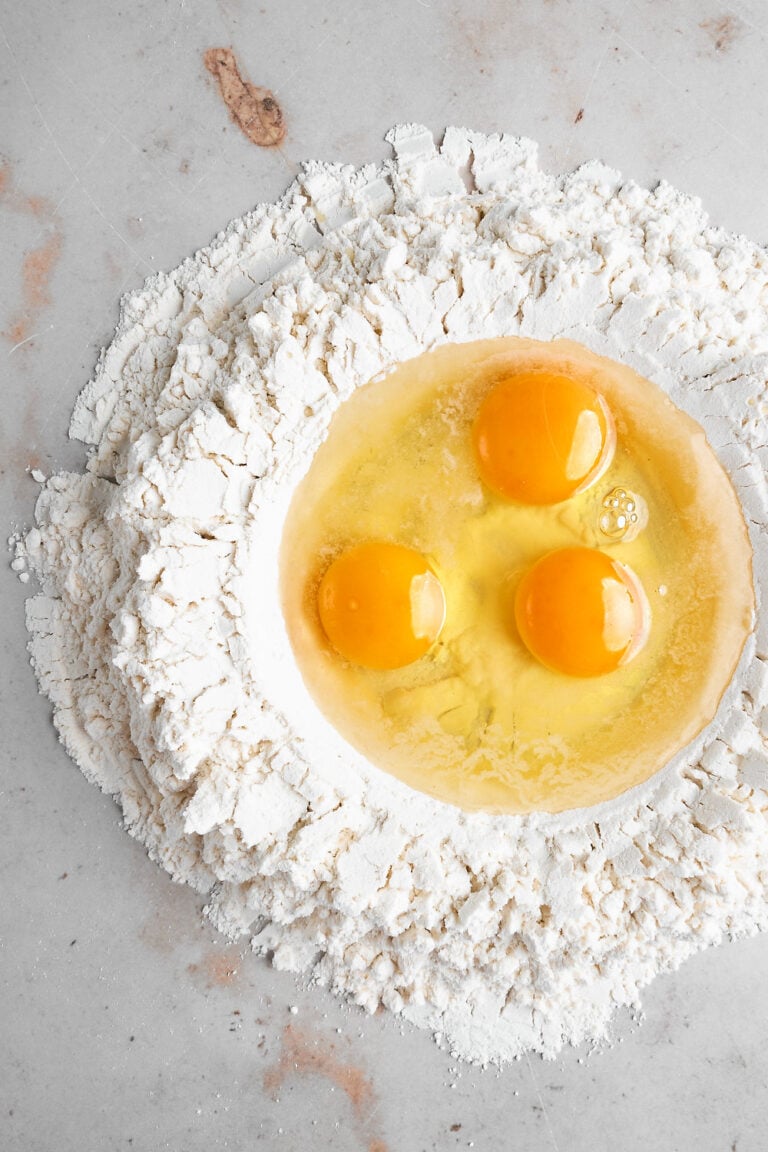
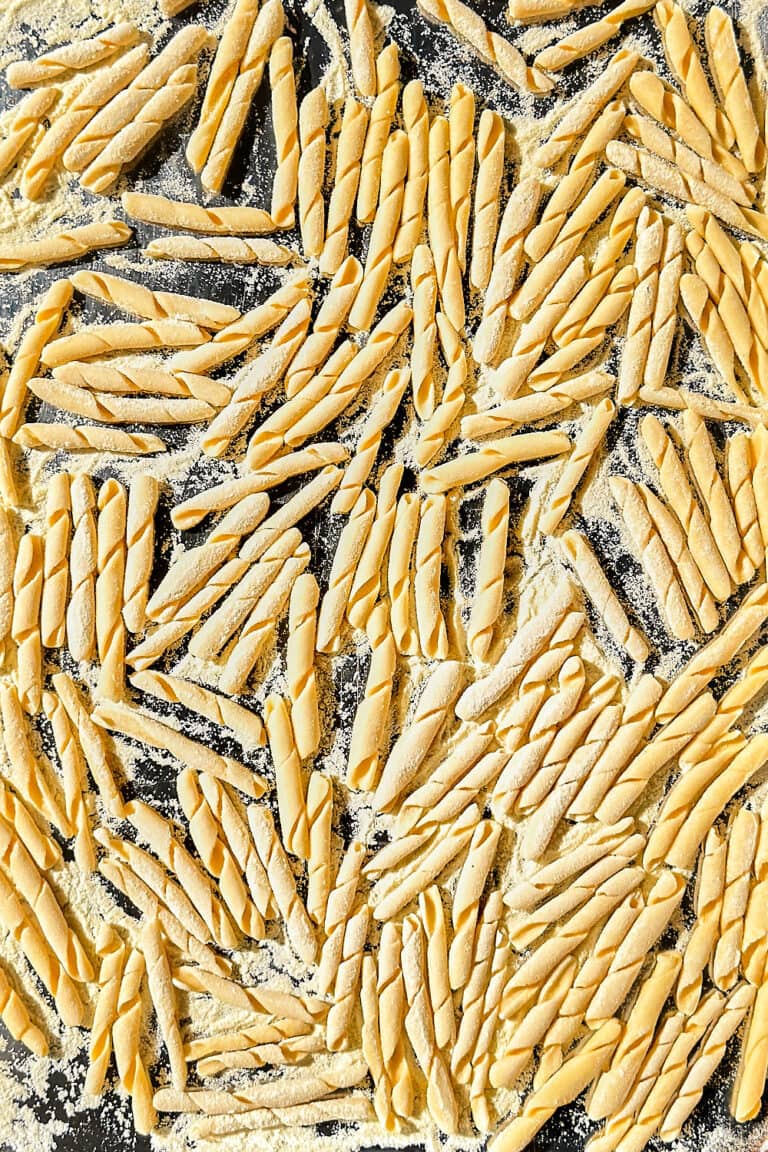
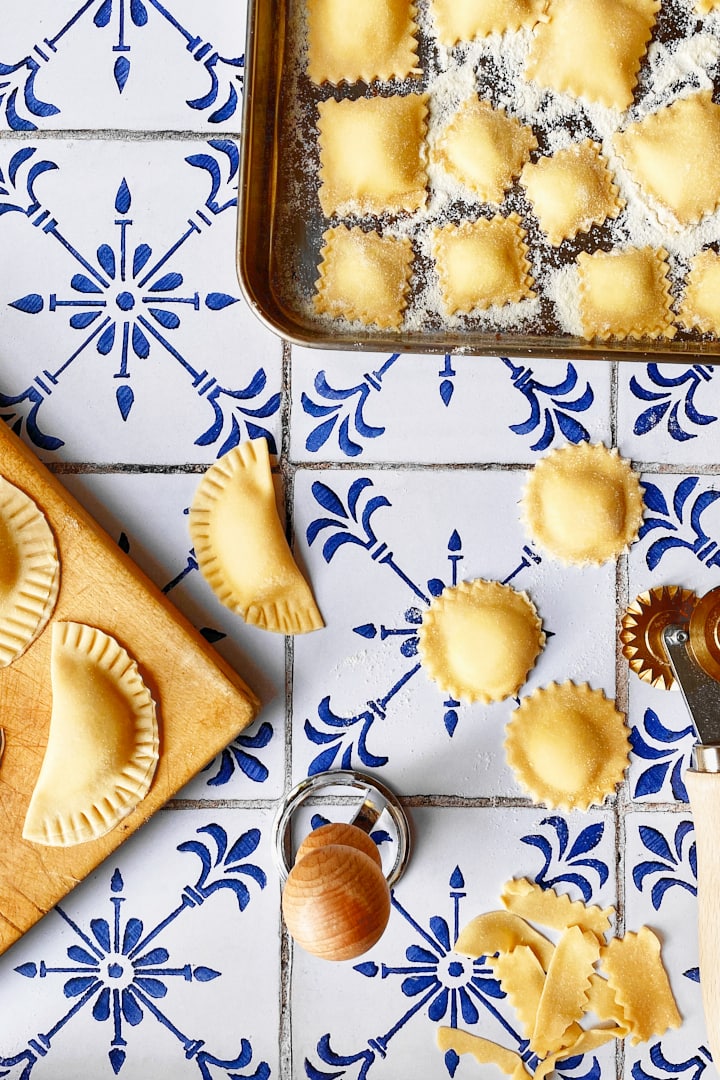
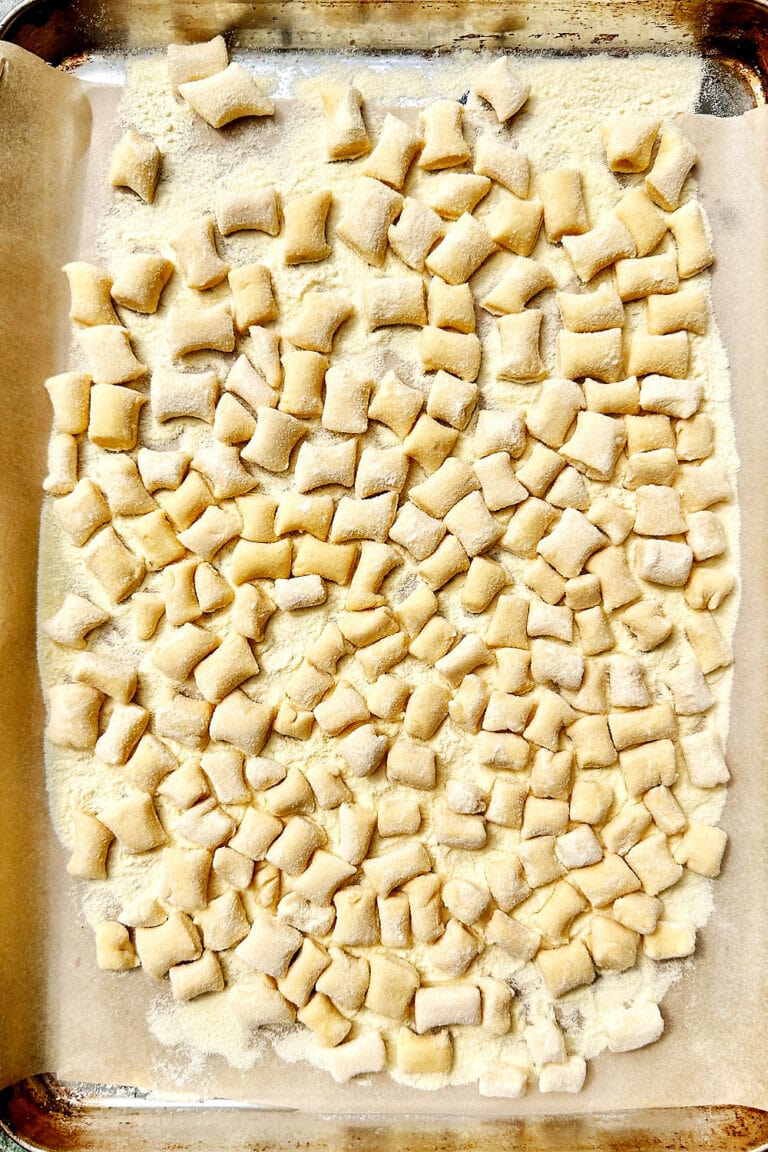
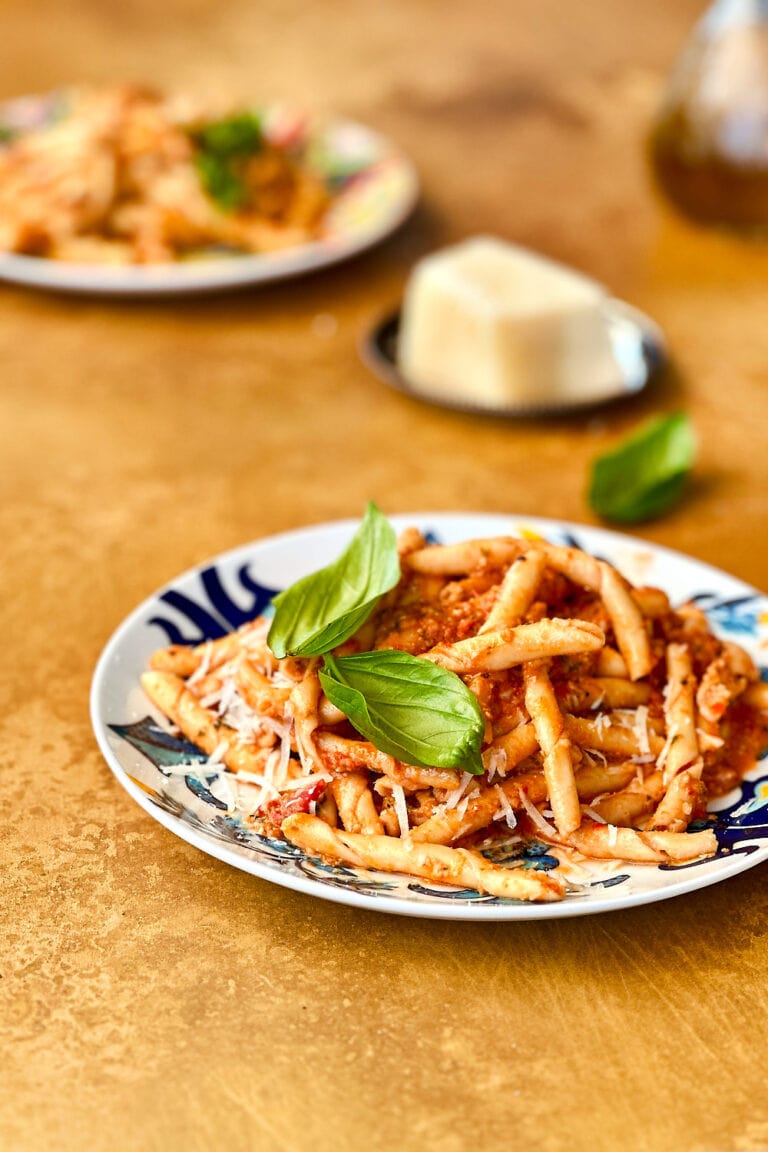
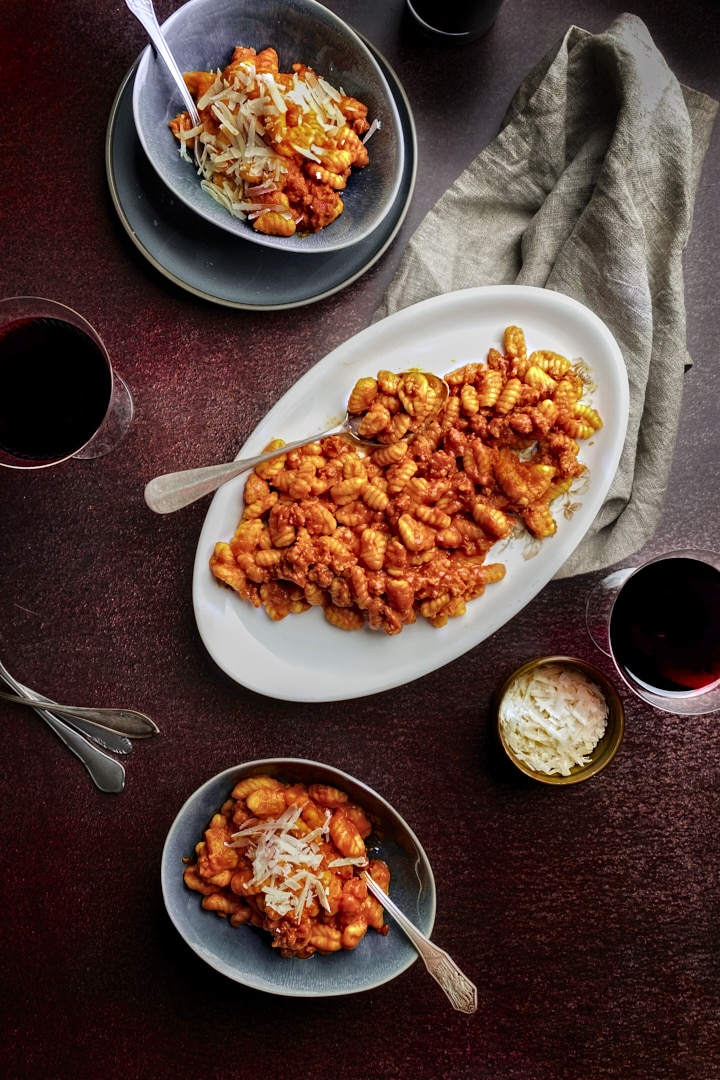
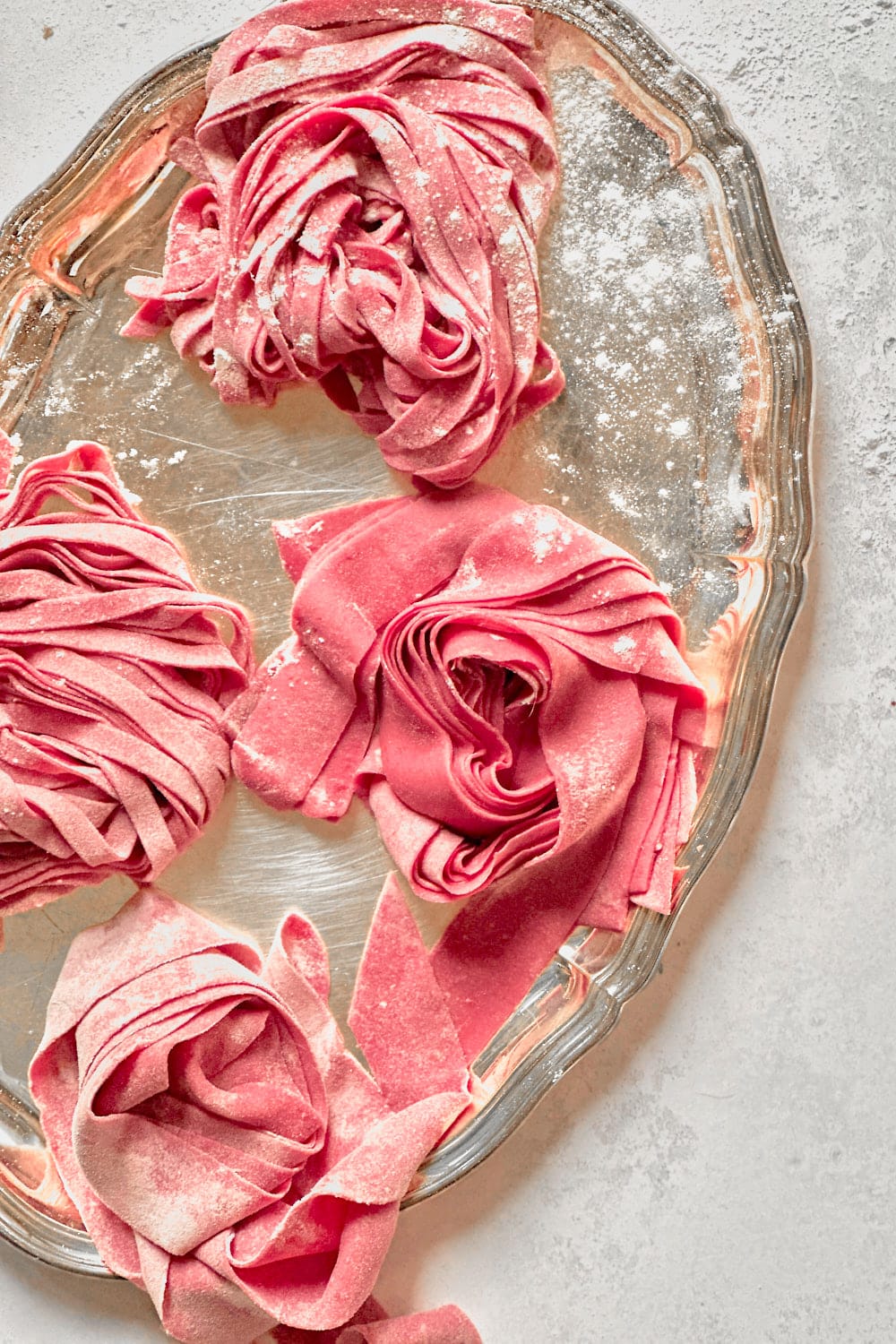
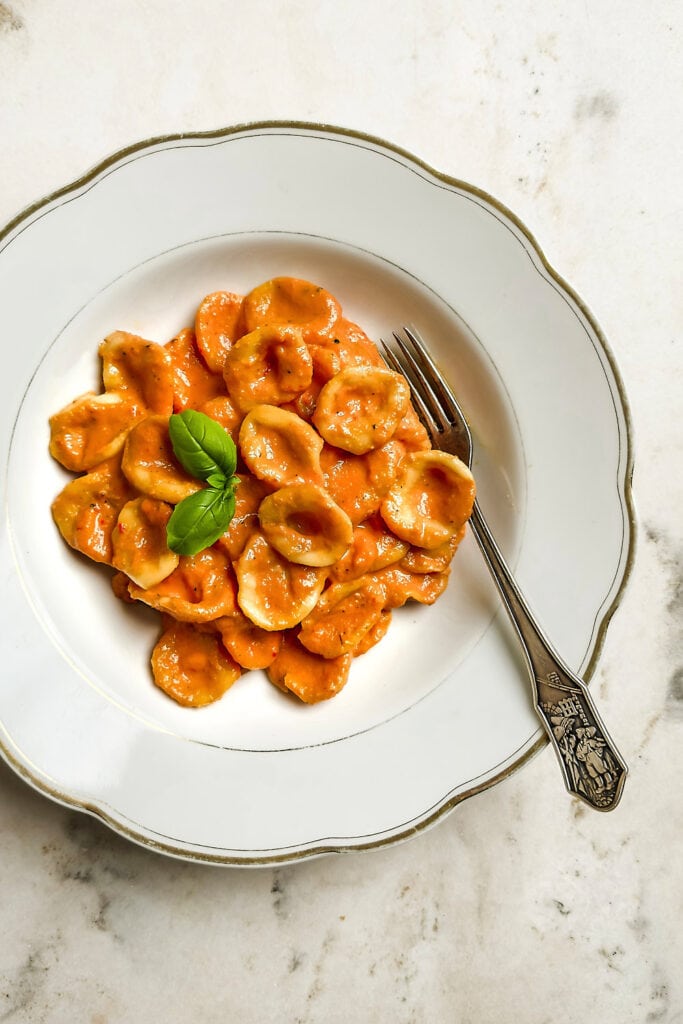
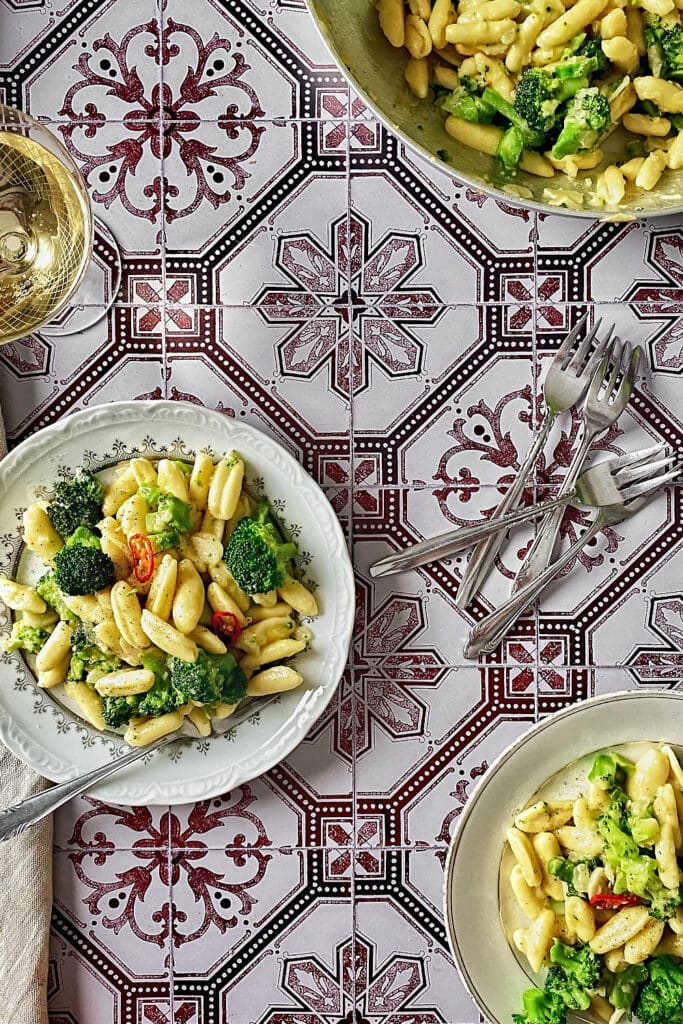
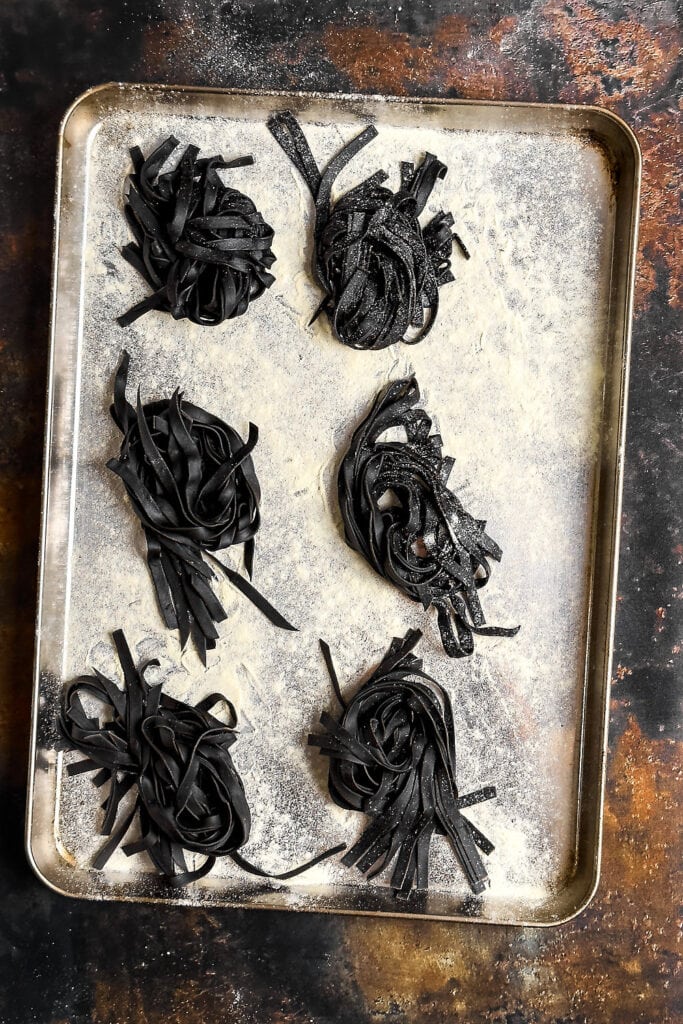
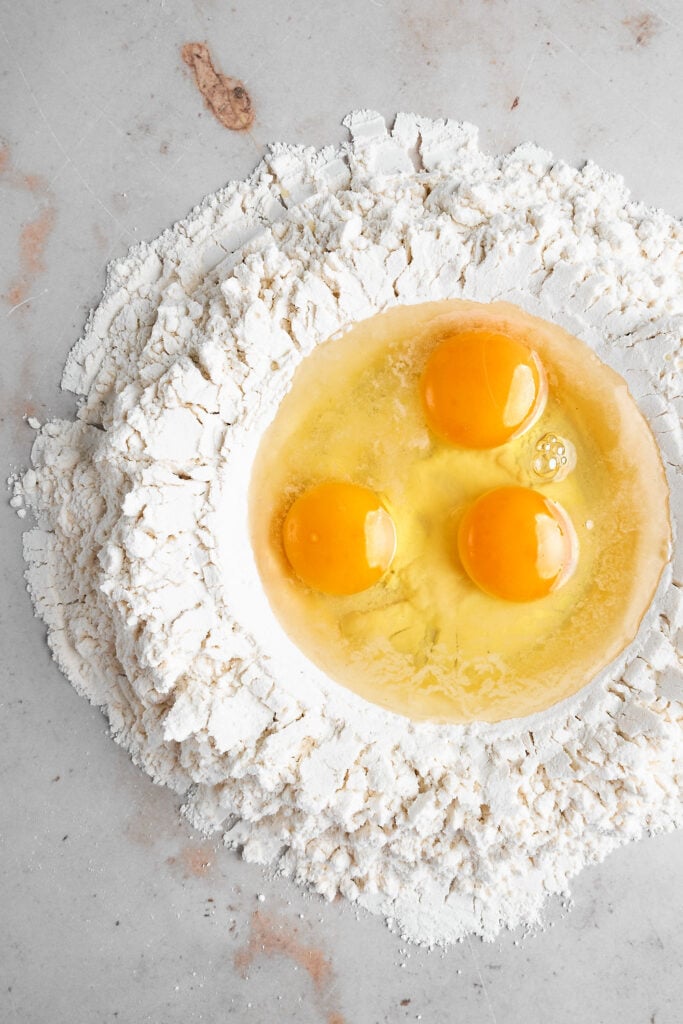
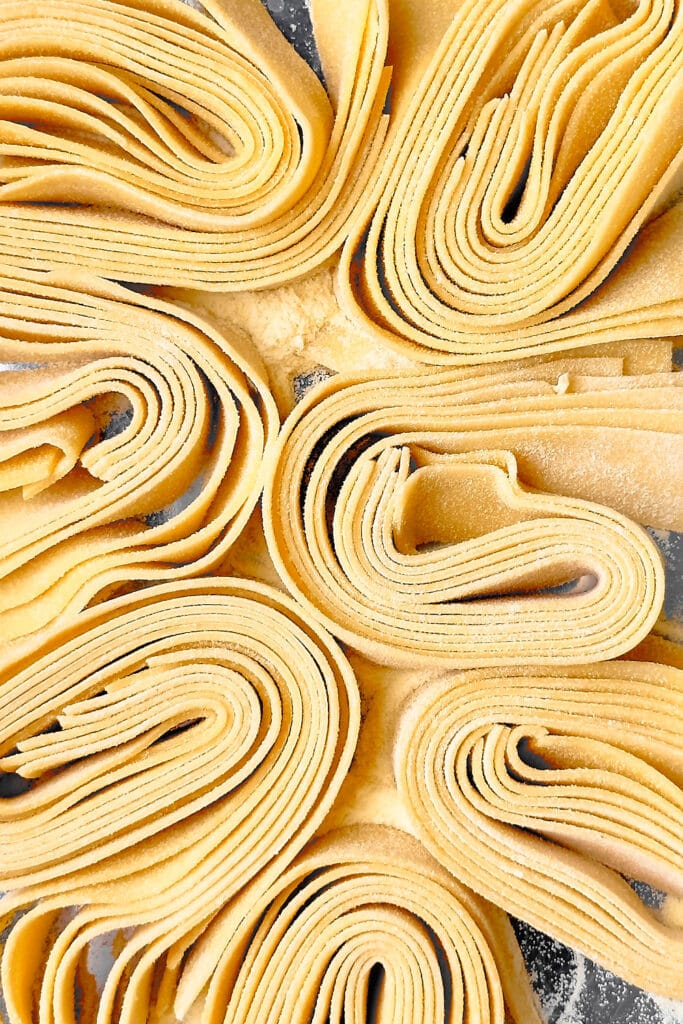
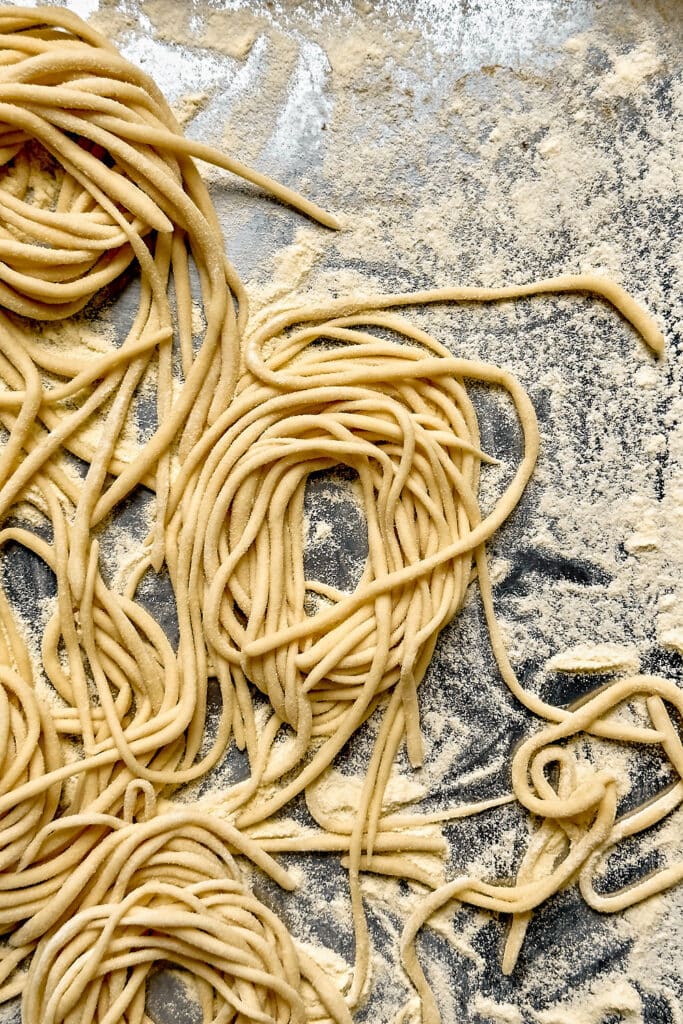
Easy to prepare, great result; took quite long for cooking